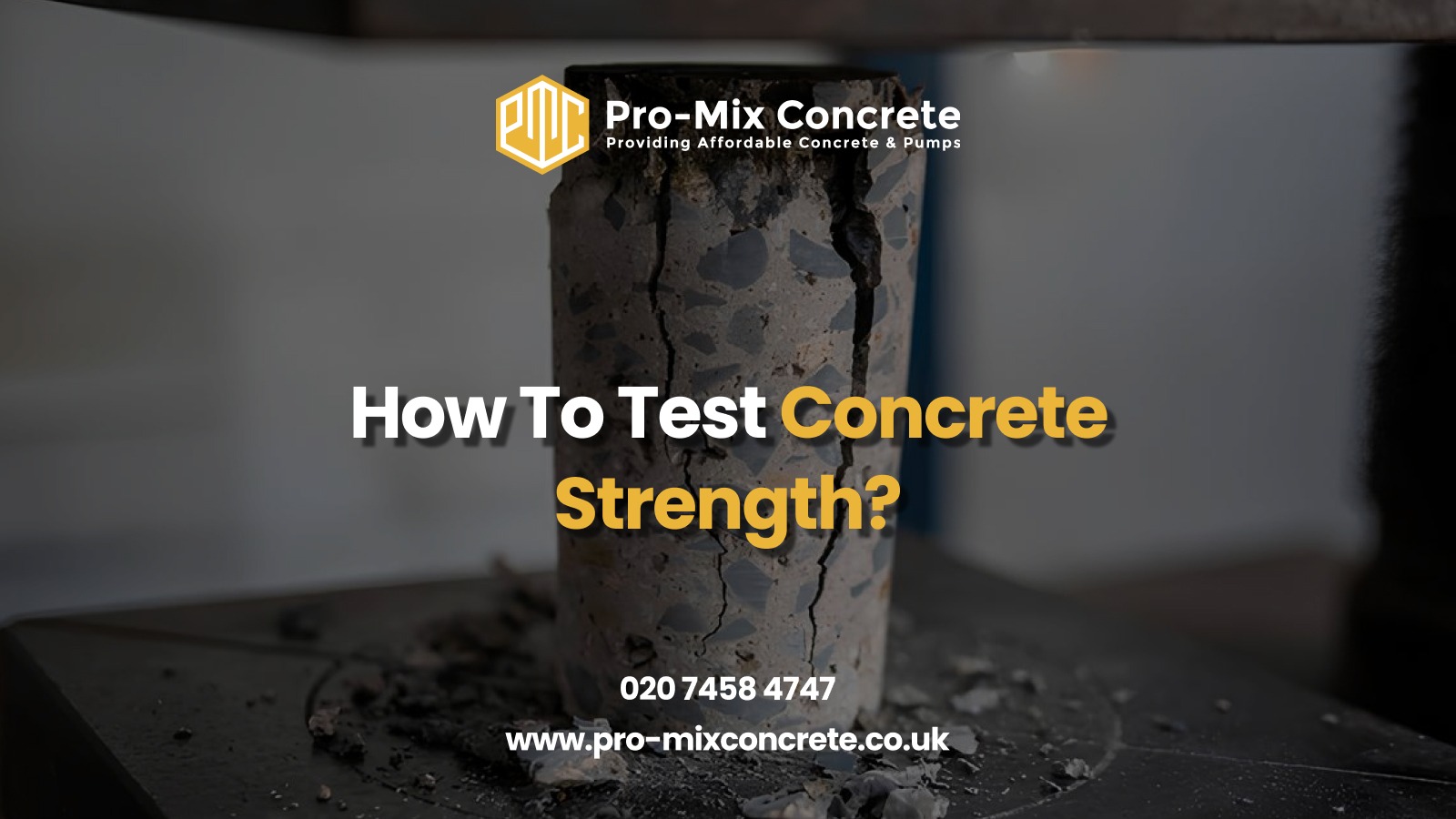Concrete strength testing is essential to ensure that construction projects are safe, durable, and compliant with regulations. Whether you’re a contractor working on mixed on-site concrete in Bromley or a DIY enthusiast tackling small projects, knowing how to test concrete strength can make a huge difference. Concrete strength determines how well it can withstand loads, resist cracking, and endure harsh environmental conditions. Testing this strength helps you assess the quality of your mix and guarantees that your structure will stand the test of time.
Why Test Concrete Strength?
Concrete strength testing ensures that the material meets design specifications and performs as expected. This process identifies issues such as understrength mixes or curing problems before they become costly or dangerous. Strength testing can be done at various stages of the concrete’s life cycle:
- Freshly poured concrete: To check workability and early-age strength.
- During curing: To monitor progress and determine when forms can be removed.
- In hardened concrete: To evaluate the final product and verify in-situ strength.
Testing is particularly important for mixing on-site concrete in Bromley, where variations in material proportions or mixing conditions can influence the final strength.
Methods of Testing Concrete Strength
1. Destructive Testing
a. Cylinder Compression Test
The cylinder compression test is the most widely used method to measure concrete’s compressive strength.
How it works:
- Cylinders (usually 6” x 12” or 4” x 8”) are cast using the same concrete mix used in construction.
- After curing for 7, 14, or 28 days, the cylinder is placed in a compression testing machine.
- An axial load is applied until the cylinder fails. The maximum load divided by the cross-sectional area gives the compressive strength.
Pros:
- Highly accurate and reliable.
- Accepted as the industry standard.
Cons:
- Destructive—cylinders cannot be reused.
- Requires controlled casting and curing.
| Advantages | Limitations |
| Direct measure of strength | Specimens may not represent in-place concrete accurately |
| Industry-accepted | Requires handling and preparation |
b. Cube Test
The cube test follows a similar process but uses cube-shaped specimens (typically 150mm x 150mm x 150mm).
Pros:
- Easier to handle than cylinders.
- Popular in regions like Europe.
Cons:
- May not reflect the actual strength of in-situ concrete.
c. Core Drilling
This method extracts cores directly from hardened concrete structures for testing.
How it works:
- Cylindrical cores are drilled from the structure.
- They are trimmed, measured, and tested in compression.
Pros:
- Useful for evaluating existing structures.
- Represents in-situ conditions.
Cons:
- Damages the structure.
- Results depend on the drilling process and location.
2. Non-Destructive Testing (NDT)
Non-destructive methods allow you to assess concrete strength without damaging it, making them ideal for in-situ evaluation.
a. Rebound Hammer Test
This test uses a rebound hammer to measure the surface hardness of concrete.
How it works:
- A spring-loaded hammer strikes the surface.
- The rebound distance is measured and correlated with concrete strength.
Pros:
- Quick and easy.
- Portable, ideal for on-site testing.
Cons:
- Affected by surface conditions.
- Requires calibration with core samples for accuracy.
b. Ultrasonic Pulse Velocity Test
This method uses ultrasonic pulses to evaluate concrete strength and detect internal flaws.
How it works:
- Ultrasonic waves are sent through the concrete.
- The speed of the pulse is measured; higher velocities indicate stronger, denser concrete.
Pros:
- Non-destructive and versatile.
- Can detect voids and cracks.
Cons:
- Affected by moisture and reinforcement.
- Requires skilled operators.
c. Maturity Method
This method estimates strength by monitoring concrete’s curing temperature and time.
How it works:
- Sensors are embedded in fresh concrete to track temperature.
- A maturity index is calculated and correlated with strength based on pre-calibrated curves.
Pros:
- Real-time strength monitoring.
- Non-destructive.
Cons:
- Requires initial calibration for each mix.
Comparing Destructive and Non-Destructive Testing
| Method | Type | Use Case |
| Cylinder Compression | Destructive | Lab testing for new concrete mixes |
| Cube Test | Destructive | Quality control for mass-produced concrete |
| Core Drilling | Destructive | In-situ evaluation of existing structures |
| Rebound Hammer | Non-Destructive | On-site assessment of surface strength |
| Ultrasonic Test | Non-Destructive | Detecting internal voids and assessing quality |
| Maturity Method | Non-Destructive | Real-time monitoring during construction |
How to Choose the Right Method
Your choice of testing method will depend on:
- Project requirements: Structural elements may demand more precise testing.
- Location: On-site or lab testing may dictate the method.
- Budget and time: Non-destructive tests are quicker but may need calibration.
For projects using mixed on-site concrete in Bromley, combining destructive and non-destructive methods can provide a comprehensive understanding of strength and quality.
Tips for Reliable Testing
- Follow Standards: Use recognised guidelines like ASTM or British Standards to ensure accuracy.
- Proper Curing: Cure specimens properly to mimic in-situ conditions.
- Regular Calibration: Keep testing equipment calibrated for consistent results.
- Test at Multiple Ages: Evaluate strength at 7, 14, and 28 days to track progress.
- Document Results: Keep detailed records for quality control and future reference.
Conclusion
Testing concrete strength is an indispensable step in ensuring the safety and durability of any construction project. From traditional methods like the cylinder compression test to modern techniques like ultrasonic testing, each method offers unique benefits and insights. Whether you’re working on a residential driveway or a major infrastructure project, selecting the right testing method is crucial for success.
About Pro-Mix Concrete
For reliable and high-quality mix on site concrete Bromley, Pro-Mix Concrete delivers unmatched service and expertise. Whether you’re a contractor needing precise formulations or a homeowner looking for durable concrete, Pro-Mix ensures your project is built to last. With our dedication to quality and customer satisfaction, we make your construction experience smooth and stress-free.
Contact us today for all your concrete needs!
